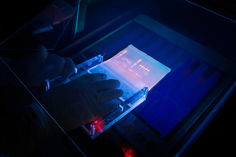Access to Core Facility
Who has access to the service?
The following clients have access to the facility:
• Members of the University of Heidelberg, including the Medical Faculties Heidelberg and Mannheim
• Excellence Cluster CellNetworks
• Graduate school HBIGS (Hartmut Hoffmann Berling International Graduate School of Molecular and Cellular Biology)
• HMLS (Heidelberg Molecular Life Sciences)
• DKFZ/MPI
How to approach nCounter Core Facility
Scientists interested in using the facility should contact us by e-mail
nCounter_Core_Facility(at)med.uni-heidelberg.de
to make an appointment to discuss their project.
Our online system should be used for the registration of experiments.
Fees
Users have to order their codesets for the analysis in advance from nanostring. All consumables, handling of samples, data generation and processing the customer have to pay a service fee. Prices vary depending on the type of experiment between 40 and 50 € per sample. A detailed pricing list can be obtained upon request.
FAQ

The nCounter Core Facility
The nCounter Core Facility has been established to provide access to one of the current state of the art expression profiling technologies for the Heidelberg University research community. It is supported by the Excellence Cluster Cell Networks and the DFG.
The nCounter System
The nCounter system is a complete, fully automated system for the next generation of digital gene expression analysis.
The nCounter system from NanoString Technologies is an instrument designed for multiplexed measurement of gene expression using fluorescently labeled reporter probes, so called ‘codesets’. The codeset probes are ca 100 bases in size. Therefore, the system is very resistant to lower RNA quality and is perfectly suited for critical samples such as FFPE samples.
Applying a unique coding technology enables direct counting of individual RNA molecules across all levels of biological expression, with sensitivity and specificity comparable to Real Time PCR (RT PCR). The main advantage is reflected by the fact that no enzymatic reactions are involved, inparticular no reverse transcription is necessary.
Synpopsis
• Low RNA input (100 ng of total RNA⁄sample)
• Possibility to analyze RNA samples of poor quality (such a FFPE samples)
• Up to 800 transcripts simultaneously interrogated per sample
• No enzymatic reactions involved
• Very high dynamic range, sensitivity and reproducibility
• Perfect tool for microarray validation, pathway analysis, expression analyses of defined gene sets and for biomarker validation
Applications
- mRNA Profiling
custom set of genes or off-the-shelf preassembled panels (details on NanoString website); - miRNA Profiling
comprehensive collection of more than 700 human and human-associated viral miRNAs as well as murine miRNAs derived from miRBase (details on NanoString website).
analysis of DNA (CNVs and karyotypes)
(details on NanoString website).
For further reading: the technology has firstly been described in 2008: Geiss et al., 2008. Direct multiplexed measurement of gene expression with color-coded probe pairs. Nature Biotechnology 26, 317-325.
The complete nCounter system consists of two instruments.
1. PrepStation (liquid handling robot), used to purify ternary complexes obtained during the hybridization, remove unhybridized free probes and immobilize the complexes into the cartridge for subsequent image acquisition.
2. nCounter (image acquisition instrument), used to scan the cartridge and generate raw data (counts).

nCounter technical details
nCounter analysis
For custom projects, probes for a CodeSet are designed by NanoString bioinformaticians, on the basis of a RefSeq ID’s. This format is available for 48 or 96 samples, or multiple of 96 samples.
A nCo
1. Positive controls: these include a series of 10 RNA spiked in the CodeSet and are used for internal QC and calibration.
2. Negative controls: a series of 7 probes against alien sequences that are used for QC purposes and for generation of background values.
Similar to RT PCR, probes for normalization genes must be included in the CodeSet. These must be selected based on prior knowledge.
Data analysis by the nCounter Core Facility includes background correction, normalization and fold-change calculation.




